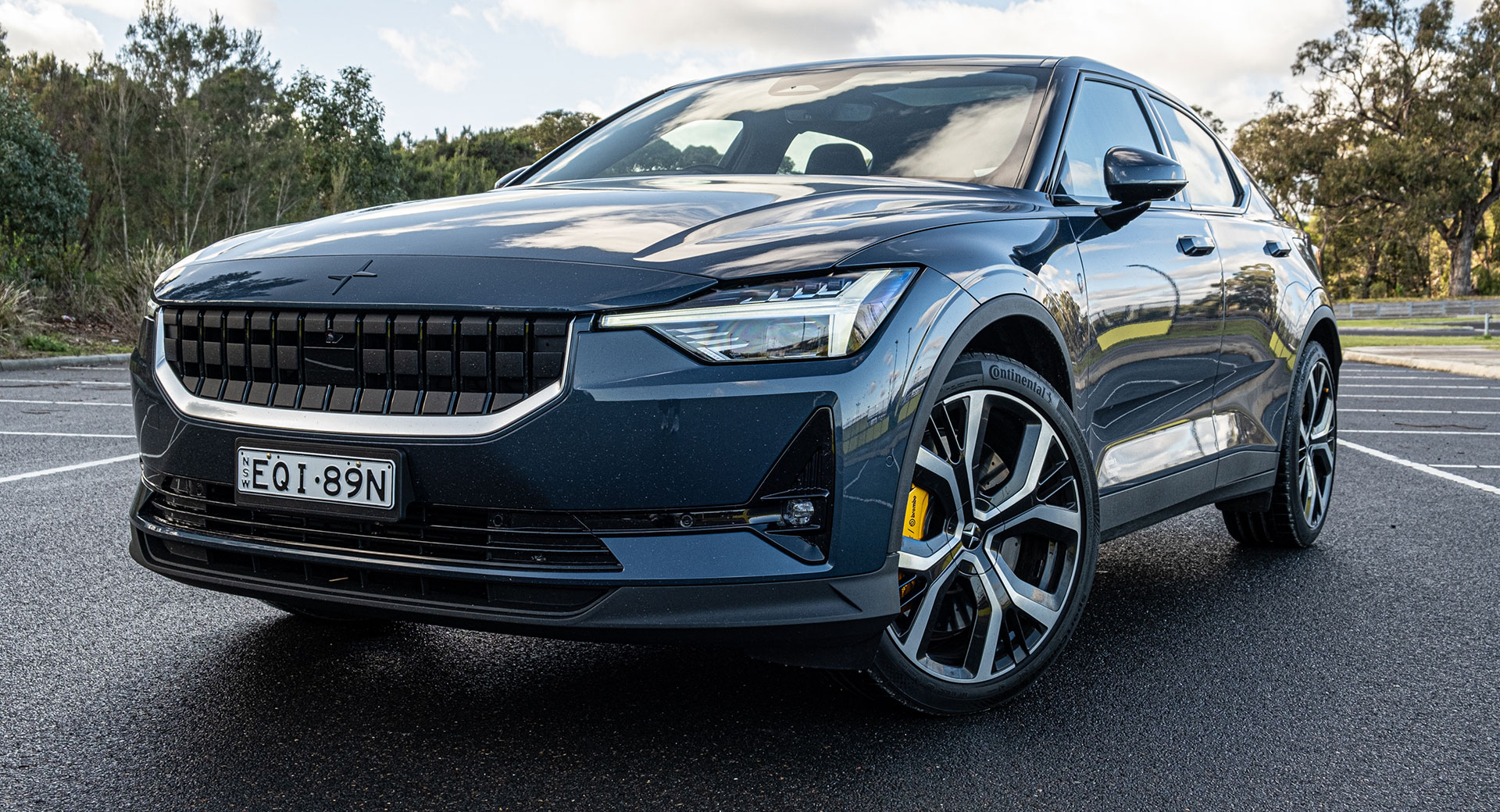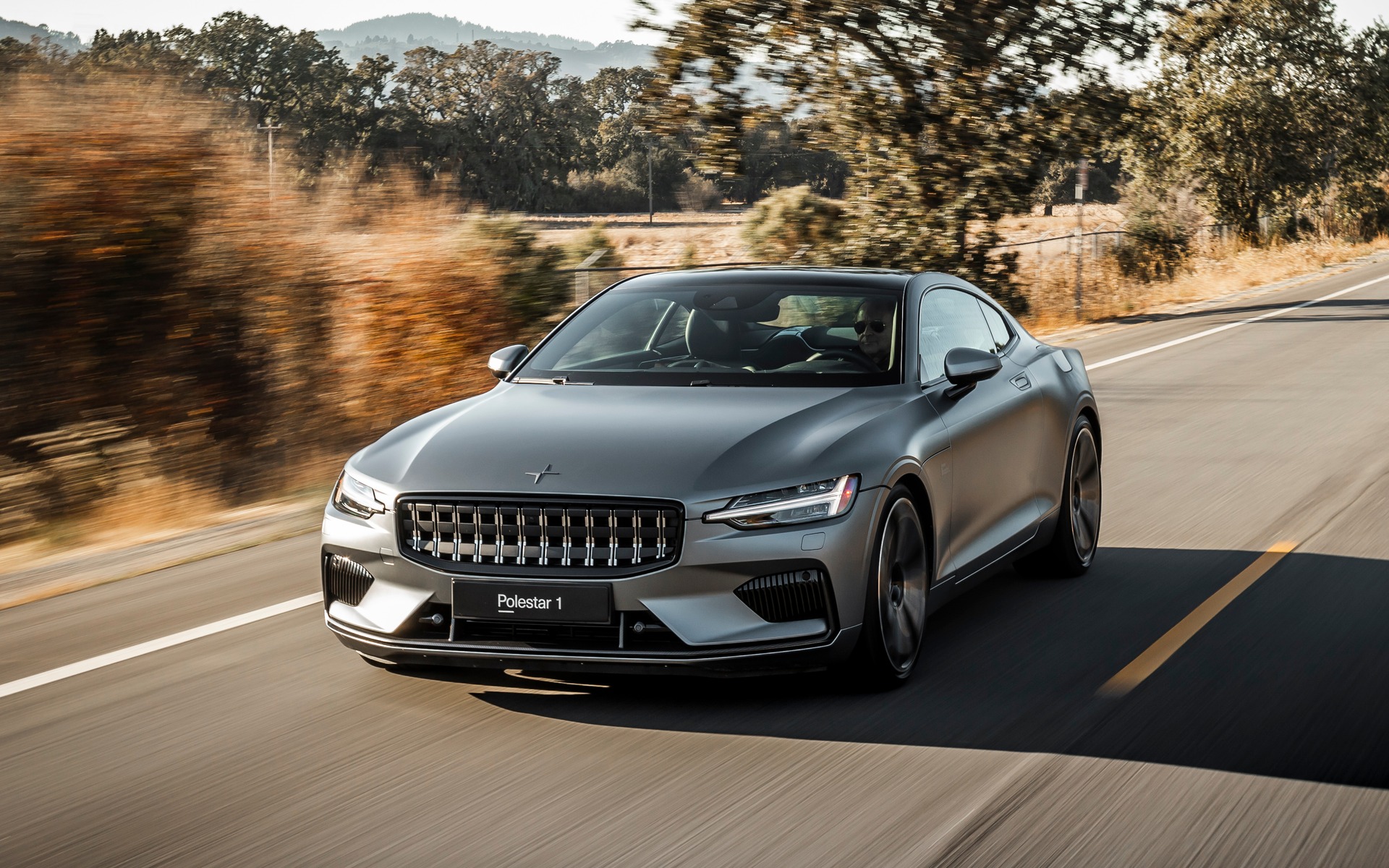Polestar Car Brands: A Deep Dive into Electric Performance and Sustainable Design
Polestar Car Brands: A Deep Dive into Electric Performance and Sustainable Design cars.truckstrend.com
In the rapidly evolving landscape of automotive innovation, a new star has emerged, shining brightly with a unique blend of performance, minimalist design, and an unwavering commitment to sustainability: Polestar. Once an obscure racing division and performance tuning arm of Volvo, Polestar has meticulously transformed itself into a standalone, premium electric vehicle (EV) brand, poised to challenge established luxury carmakers and EV pioneers alike. This comprehensive guide delves into every facet of Polestar Car Brands, exploring its journey, design philosophy, technological prowess, ambitious sustainability goals, and what it means to own a piece of its electric future.
The Genesis of an Electric Vision: History and Evolution
Polestar Car Brands: A Deep Dive into Electric Performance and Sustainable Design
Polestar’s journey is a fascinating narrative of transformation. It began in 1996 as Flash Engineering, a Swedish motorsport team that specialized in racing Volvo cars. Renamed Polestar Racing in 2005, it quickly became synonymous with high-performance Volvo models, developing aftermarket tuning packages and eventually producing factory-tuned performance variants like the S60 and V60 Polestar.
The pivotal moment arrived in 2015 when Volvo Cars, owned by the Chinese automotive giant Geely, fully acquired Polestar Performance. This acquisition marked a strategic shift. Rather than remaining a mere performance division, Polestar was repositioned in 2017 as a standalone electric performance brand, separate yet closely linked to Volvo. The vision was clear: to create electric vehicles that combine cutting-edge technology with Scandinavian design and a strong emphasis on sustainability, all while leveraging Volvo’s engineering excellence and manufacturing capabilities. This move positioned Polestar not just as an EV maker, but as a lifestyle brand for the environmentally conscious performance enthusiast.
Design Philosophy and Brand Identity: Scandinavian Minimalism Meets Performance
Polestar’s brand identity is instantly recognizable and deeply rooted in its Scandinavian heritage. The design philosophy centers on minimalism, purity, and precision. Unlike many performance brands that rely on aggressive lines and overt styling cues, Polestar cars exude a sophisticated understatement. Every line, every surface, and every detail is carefully considered to be functional, elegant, and timeless.
Key elements of Polestar’s design language include:
- Clean, uncluttered surfaces: A rejection of unnecessary ornamentation, allowing the form to speak for itself.
- Distinctive lighting signatures: The "Thor’s Hammer" headlights (shared with Volvo but adapted) and unique rear light bars create an unmistakable presence.
- Emphasis on proportions: Balanced and athletic stances that hint at performance without shouting.
- Sustainable material choices: Interior materials often feature recycled plastics, vegan leathers, and innovative composites, reflecting the brand’s environmental ethos.
- User-centric interior: Cabins are designed for intuitive use, with a focus on ergonomics and digital integration.

This design approach extends beyond aesthetics, influencing the very engineering of the vehicles to be aerodynamic, efficient, and refined. Polestar is not just about electric propulsion; it’s about a holistic experience that values thoughtful design and responsible performance.

The Polestar Lineup: A Growing Family of Electric Innovators
Polestar’s product strategy began with a halo car, followed by a mainstream offering, and is now expanding rapidly into key market segments, particularly SUVs.
-
Polestar 1 (2019-2021): The Hybrid Halo

The Polestar 1 was the brand’s inaugural vehicle and a powerful statement of intent. It was a limited-production, high-performance Grand Tourer (GT) with a unique plug-in hybrid powertrain. Combining a turbocharged and supercharged 2.0-liter gasoline engine with two electric motors on the rear axle, it delivered 609 horsepower and 738 lb-ft of torque. Its carbon fiber body, Öhlins suspension, and Akebono brakes underscored its performance credentials. While not fully electric, the Polestar 1 served as a crucial bridge, showcasing the brand’s design language, performance capabilities, and advanced engineering before fully committing to BEVs. -
Polestar 2 (2020-Present): The All-Electric Pioneer
The Polestar 2 is the brand’s volume seller and its first mass-produced all-electric vehicle. Positioned as a compact executive fastback, it directly competes with models like the Tesla Model 3.- Variants: Available in Single Motor (front-wheel drive or rear-wheel drive depending on model year) and Dual Motor (all-wheel drive) configurations.
- Performance: The Dual Motor variant offers exhilarating acceleration, typically achieving 0-60 mph in under 4.5 seconds, while the Single Motor provides ample power for daily driving.
- Range: Ranges vary by configuration and battery size, with Long Range versions typically offering over 300 miles (WLTP) or around 270 miles (EPA).
- Key Features: Android Automotive OS infotainment system, panoramic glass roof, frameless mirrors, and optional Performance Pack with Öhlins dampers and Brembo brakes.
-
Polestar 3 (Expected 2024): The Performance SUV
The Polestar 3 marks the brand’s entry into the highly competitive premium electric SUV segment. Designed from the ground up as a pure EV, it aims to deliver strong performance, advanced technology, and a distinct Polestar aesthetic in a larger, more versatile package. It shares its platform with the Volvo EX90 and emphasizes aerodynamic efficiency and sophisticated driving dynamics. -
Polestar 4 (Expected 2024): The SUV Coupé
Positioned between the Polestar 2 and Polestar 3 in terms of size and price, the Polestar 4 is a sleek SUV coupé that prioritizes design and aerodynamics. Its most striking feature is the absence of a rear window, replaced by a high-definition screen for the driver and a panoramic glass roof extending past the rear passengers. This innovative design further pushes the boundaries of conventional automotive aesthetics. -
Polestar 5 (Concept, Future): The Electric GT
Previewed by the Polestar Precept concept, the Polestar 5 is slated to be a high-performance four-door grand tourer, designed to compete with the likes of the Porsche Taycan and Tesla Model S. It promises cutting-edge technology, an advanced bonded aluminum chassis, and a powerful dual-motor powertrain, embodying Polestar’s commitment to electric performance. -
Polestar 6 (Concept, Future): The Electric Roadster
The Polestar 6 is the brand’s most audacious concept yet – an all-electric two-door roadster, inspired by the O2 concept. It signifies Polestar’s ambition to combine exhilarating open-top driving with sustainable electric performance, further expanding its emotional appeal.
Technology and Innovation: A Smart and Connected Ride
Polestar cars are technological powerhouses, integrating advanced systems that enhance safety, convenience, and the overall driving experience.
- Android Automotive OS: A cornerstone of Polestar’s infotainment, this native Google operating system provides seamless integration of Google services like Google Maps, Google Assistant, and the Google Play Store directly into the car. This eliminates the need for phone mirroring, offering a highly intuitive and personalized user experience.
- Over-the-Air (OTA) Updates: Like a smartphone, Polestar vehicles receive regular software updates remotely, improving functionality, adding new features, and enhancing performance over time without needing a visit to a service center.
- Advanced Driver-Assistance Systems (ADAS): Polestar leverages Volvo’s industry-leading safety expertise, incorporating a comprehensive suite of ADAS features, including adaptive cruise control, lane-keeping assist, blind-spot monitoring, and advanced collision avoidance systems, all powered by an array of cameras, radars, and ultrasonic sensors.
- Battery Technology and Charging: Polestar employs modern lithium-ion battery packs, designed for efficient energy storage and fast charging. Vehicles support DC fast charging, allowing for significant range replenishment in relatively short periods (e.g., 10-80% in around 30 minutes on suitable chargers).
- Sustainable Tech Integration: Beyond propulsion, Polestar uses technology to track and trace raw materials like cobalt through blockchain, ensuring ethical sourcing and transparency in its supply chain.
Sustainability at the Core: Driving Towards Climate Neutrality
Sustainability isn’t an afterthought for Polestar; it’s a foundational pillar of its brand identity and operations. The company has set ambitious goals to become truly climate neutral across its entire value chain by 2040, a target that extends beyond simply producing zero-emission tailpipes.
Key aspects of Polestar’s sustainability commitment include:
- Life Cycle Assessments (LCAs): Polestar publishes detailed LCAs for its vehicles, transparently showing the carbon footprint of each model from raw material extraction and manufacturing to usage and end-of-life recycling. This commitment to transparency is rare in the automotive industry.
- Circular Economy Principles: The brand actively explores and implements strategies for a circular economy, aiming to minimize waste and maximize the use of recycled and renewable materials.
- Sustainable Materials: Interiors feature innovative materials such as WeaveTech (a vegan alternative to leather), recycled PET bottles, reclaimed fishing nets, and cork. Future concepts like the Polestar Precept showcase materials made from flax-based composites, further reducing reliance on traditional plastics and metals.
- Ethical Sourcing: Polestar uses blockchain technology to trace critical raw materials like cobalt, ensuring they are sourced responsibly and ethically, free from child labor or conflict.
- Green Manufacturing: Production facilities are increasingly powered by renewable energy, and processes are optimized to reduce waste and energy consumption.
While the path to true climate neutrality is challenging, Polestar’s proactive approach and transparency set a high standard for the industry.
Ownership Experience and Sales Model: A Digital-First Approach
Polestar has adopted a direct-to-consumer sales model, diverging from the traditional dealership network. This approach is designed to simplify the purchasing process and provide a premium, transparent experience.
- Online Sales: Customers can configure and purchase their Polestar vehicle entirely online, from the comfort of their home. This digital-first strategy offers convenience and price transparency, avoiding negotiation.
- Polestar Spaces: Complementing the online experience are "Polestar Spaces" – minimalist retail environments located in urban centers. These aren’t traditional dealerships but rather brand showrooms where customers can see the cars, learn about the technology, and interact with non-commissioned Polestar Specialists. Test drives can also be arranged from these Spaces.
- Service Network: For servicing and maintenance, Polestar leverages Volvo’s extensive service network, providing convenient access to trained technicians and genuine parts.
- Benefits: This model offers a streamlined, low-pressure buying experience, consistent pricing, and direct access to brand expertise.
- Potential Challenges: Some customers may miss the traditional dealership interaction, though Polestar aims to bridge this with the physical Spaces.
Driving Experience: Performance Meets Refinement
Driving a Polestar is an experience defined by a compelling blend of spirited performance and refined comfort.
- Instant Torque: As with all EVs, Polestar vehicles deliver instant torque, resulting in rapid and seamless acceleration. The Dual Motor variants, in particular, offer exhilarating off-the-line performance.
- Precise Handling: Polestar cars benefit from a low center of gravity due to their underfloor battery placement, contributing to stable and agile handling. The optional Performance Pack (on Polestar 2) elevates this further with adjustable Öhlins dampers, offering a more dynamic and engaging ride.
- Refined Ride: While performance-oriented, Polestar vehicles also offer a comfortable and quiet ride, typical of EVs. The absence of engine noise and vibrations creates a serene cabin environment.
- Regenerative Braking: Drivers can choose varying levels of regenerative braking, allowing for "one-pedal driving" where lifting off the accelerator slows the car significantly, also recapturing energy.
Market Position and Competition: A Niche in the Premium EV Space
Polestar operates in the increasingly crowded premium electric vehicle segment. Its primary competitors include:
- Tesla: Model 3, Model Y (Polestar 2, Polestar 3/4)
- BMW: i4, iX, i5
- Mercedes-Benz: EQE, EQE SUV, EQS, EQS SUV
- Audi: e-tron, Q4 e-tron, Q8 e-tron, e-tron GT
- Lucid: Air
- Rivian: R1S, R1T
- Hyundai/Kia: Ioniq 5/6, EV6 (though often seen as more mainstream, they offer compelling value)
Polestar differentiates itself through:
- Distinctive Scandinavian design: A clear aesthetic alternative to more futuristic or aggressively styled EVs.
- Strong sustainability narrative: A deeper, more transparent commitment to environmental responsibility.
- Android Automotive OS integration: A superior infotainment experience for many users.
- Volvo’s safety heritage: Leveraging a strong foundation in automotive safety.
- Direct-to-consumer model: A unique sales approach that appeals to a modern consumer.
Future Outlook and Vision: Accelerating Towards an Electric Future
Polestar’s future is characterized by aggressive expansion and continued innovation. The brand aims to launch a new model every year for the foreseeable future, expanding its lineup and market reach. Key areas of focus include:
- Global Expansion: Increasing presence in key automotive markets worldwide.
- Technological Advancement: Further developing battery technology, charging infrastructure, and autonomous driving capabilities.
- Sustainability Leadership: Continuing to push the boundaries of sustainable design and manufacturing, striving for the ambitious 2040 climate-neutral goal.
- Design Evolution: Maintaining its unique aesthetic while evolving to meet future consumer demands and technological possibilities.
Polestar is not just building cars; it’s building a brand that embodies a progressive vision for sustainable, high-performance electric mobility.
Practical Advice and Actionable Insights for Prospective Polestar Owners
Considering a Polestar? Here’s some practical advice:
- Assess Your Needs: Determine your typical daily range requirements, charging access (home charger, public chargers), and whether a fastback (Polestar 2) or SUV (Polestar 3/4) best fits your lifestyle.
- Experience a Polestar Space: While you can buy online, visiting a Polestar Space is highly recommended. It allows you to see the car in person, understand the materials, and talk to a non-commissioned specialist who can answer all your questions without sales pressure.
- Take a Test Drive: Performance and handling are key Polestar attributes. Experience the instant torque and ride quality for yourself.
- Understand the Charging Ecosystem: Familiarize yourself with public charging networks in your area and consider installing a Level 2 charger at home for convenience.
- Embrace the Digital: Polestar’s ownership experience is digitally integrated. Be comfortable with OTA updates and the Android Automotive OS.
- Consider the Options: Polestar offers curated option packs (e.g., Plus Pack, Performance Pack) that significantly enhance the vehicle. Understand what each offers and whether it aligns with your preferences.
- Check Incentives: Research local, state, and national EV incentives or tax credits that might apply to your purchase.
Polestar Car Brands: Representative Starting Prices (Estimated)
Please note: Prices are representative starting MSRPs and can vary significantly based on region, market conditions, selected options, and trim levels. Always check the official Polestar website for the most current pricing in your area.
| Model | Configuration | Representative Starting Price (USD) | Key Features / Notes |
|---|---|---|---|
| Polestar 2 | Single Motor (Long Range) | $50,000 – $55,000 | RWD, excellent range, Android Automotive OS, premium interior. |
| Dual Motor (Long Range) | $55,000 – $60,000 | AWD, higher performance, can add Performance Pack. | |
| Polestar 3 | Long Range Dual Motor | $75,000 – $85,000 | AWD Performance SUV, advanced safety tech, premium features. (Pre-order/Reservation) |
| Polestar 4 | Long Range Single Motor | $55,000 – $65,000 | RWD SUV Coupé, distinctive design (no rear window). (Pre-order/Reservation) |
| Long Range Dual Motor | $60,000 – $70,000 | AWD SUV Coupé, higher performance variant. | |
| Polestar 5 | High-Performance GT | Est. $100,000+ | Future model, ultra-luxury electric GT. (Concept Stage) |
| Polestar 6 | Electric Roadster | Est. $150,000+ | Future model, limited production electric roadster. (Concept Stage) |
| Polestar 1 | Plug-in Hybrid GT (Used Market) | $80,000 – $120,000+ | Limited production, no longer sold new. Prices vary heavily based on condition/mileage. |
Frequently Asked Questions (FAQ) about Polestar Car Brands
Q1: Is Polestar part of Volvo?
A1: Yes, Polestar is an independent premium electric vehicle brand, but it is jointly owned by Volvo Cars and its parent company, Geely. It leverages Volvo’s engineering expertise, manufacturing capabilities, and service network while maintaining its own distinct brand identity and product line.
Q2: Where are Polestar cars manufactured?
A2: Polestar cars are primarily manufactured in China at Geely/Volvo production facilities. The Polestar 3 will also be produced in Ridgeville, South Carolina, USA, for the North American market.
Q3: What is the typical range of a Polestar 2?
A3: The range of a Polestar 2 varies by configuration. The Long Range Single Motor version typically offers an EPA-estimated range of around 270 miles (approx. 435 km) or more. The Long Range Dual Motor offers slightly less due to higher power output, around 260 miles (approx. 418 km) EPA. WLTP figures are generally higher.
Q4: How do I buy a Polestar car?
A4: Polestar primarily uses a direct-to-consumer sales model. You can configure and order your car online through their official website. They also have "Polestar Spaces" in major cities, which are showrooms where you can experience the car and speak with a specialist, but sales are generally completed online.
Q5: Are Polestar cars reliable?
A5: As a relatively new brand, long-term reliability data is still accumulating. However, Polestar benefits significantly from its close ties to Volvo, which has a strong reputation for safety and durability. Many components and underlying technologies are shared with Volvo, suggesting a solid foundation for reliability. Software stability and OTA updates play a crucial role in overall user experience.
Q6: What is Android Automotive OS in Polestar cars?
A6: Android Automotive OS is the native infotainment system in Polestar vehicles, developed by Google. Unlike Android Auto (which mirrors your phone), this is a full operating system integrated into the car. It provides direct access to Google services like Google Maps, Google Assistant, and apps from the Google Play Store, without needing to connect your phone.
Q7: Do Polestar cars qualify for EV tax credits?
A7: Eligibility for EV tax credits or incentives varies significantly by country, region, and specific model. In the United States, for example, requirements for the federal EV tax credit have become more stringent regarding battery component sourcing and vehicle assembly locations. It’s crucial to check the latest regulations and specific vehicle VIN eligibility with your local tax authority or a qualified tax professional.
Q8: What makes Polestar different from Tesla?
A8: While both are electric vehicle brands, Polestar distinguishes itself with its strong emphasis on minimalist Scandinavian design, a deeper commitment to transparent sustainability (e.g., publishing LCAs), and a different approach to infotainment (Android Automotive OS vs. Tesla’s proprietary system). Polestar also leverages Volvo’s established safety heritage and service network, offering a more traditional "premium car" feel with an electric powertrain.
Conclusion: A New Direction for Electric Mobility
Polestar Car Brands stands as a compelling testament to the evolving automotive landscape. From its origins as a performance tuning arm, it has meticulously sculpted a niche as a premium electric vehicle manufacturer that champions design, performance, and an unparalleled commitment to sustainability. By merging Swedish minimalism with cutting-edge technology and leveraging the robust engineering foundation of Volvo, Polestar offers a unique proposition for the discerning driver.
As it expands its lineup and continues to push the boundaries of what’s possible in electric mobility, Polestar is not merely creating cars; it’s defining a new ethos for the future of transportation. For those seeking an electric vehicle that combines exhilarating performance with elegant design, intuitive technology, and a clear conscience, Polestar undoubtedly represents a guiding star in the journey towards a more sustainable and exciting automotive future.



